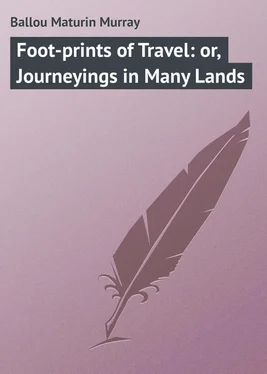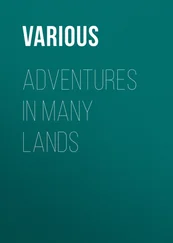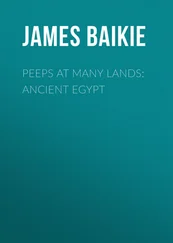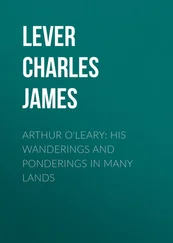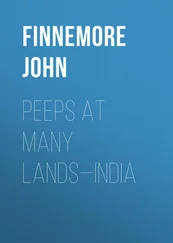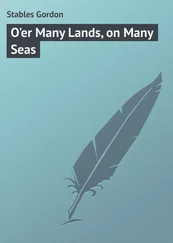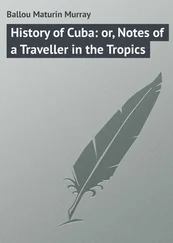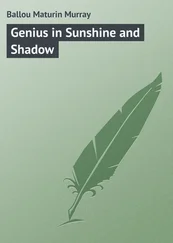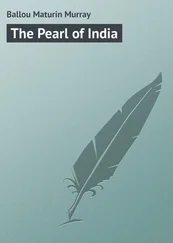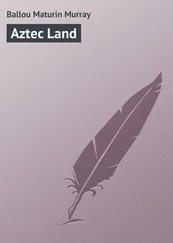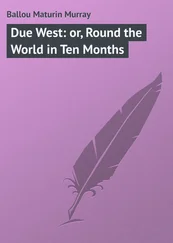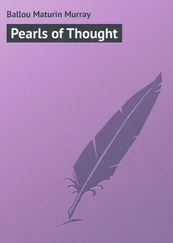Maturin Ballou - Foot-prints of Travel - or, Journeyings in Many Lands
Здесь есть возможность читать онлайн «Maturin Ballou - Foot-prints of Travel - or, Journeyings in Many Lands» — ознакомительный отрывок электронной книги совершенно бесплатно, а после прочтения отрывка купить полную версию. В некоторых случаях можно слушать аудио, скачать через торрент в формате fb2 и присутствует краткое содержание. Жанр: foreign_prose, foreign_language, на английском языке. Описание произведения, (предисловие) а так же отзывы посетителей доступны на портале библиотеки ЛибКат.
- Название:Foot-prints of Travel: or, Journeyings in Many Lands
- Автор:
- Жанр:
- Год:неизвестен
- ISBN:нет данных
- Рейтинг книги:3 / 5. Голосов: 1
-
Избранное:Добавить в избранное
- Отзывы:
-
Ваша оценка:
- 60
- 1
- 2
- 3
- 4
- 5
Foot-prints of Travel: or, Journeyings in Many Lands: краткое содержание, описание и аннотация
Предлагаем к чтению аннотацию, описание, краткое содержание или предисловие (зависит от того, что написал сам автор книги «Foot-prints of Travel: or, Journeyings in Many Lands»). Если вы не нашли необходимую информацию о книге — напишите в комментариях, мы постараемся отыскать её.
Foot-prints of Travel: or, Journeyings in Many Lands — читать онлайн ознакомительный отрывок
Ниже представлен текст книги, разбитый по страницам. Система сохранения места последней прочитанной страницы, позволяет с удобством читать онлайн бесплатно книгу «Foot-prints of Travel: or, Journeyings in Many Lands», без необходимости каждый раз заново искать на чём Вы остановились. Поставьте закладку, и сможете в любой момент перейти на страницу, на которой закончили чтение.
Интервал:
Закладка:
We pass up the Tamar River, through a narrow, winding channel for a distance of forty miles before coming to the harbor and town of Launceston. The many tall, smoking chimney-shafts which meet the eye indicate that the town is busy smelting ores, dug from the neighboring mineral hills and valleys. It is a pleasant and thrifty little city, somewhat liable to earthquakes and their attendant inconveniencies. The place has a population of ten or twelve thousand, and is named after a town in Cornwall, England. We have left Australia proper far behind us, but the Bass Strait which separates that land from Tasmania is evidently of modern formation. The similarity of the vegetation, minerals, animal, and vegetable life of the two countries shows that this island must, at some time in the long-past ages, have been connected with the mainland. And yet the aborigines of Tasmania were a race quite distinct from those of Australia, so different, indeed, as only to resemble them in color. They were a well-formed, athletic people, with brilliant eyes, curly hair, flat noses, and elaborately tattooed bodies. This ingenious and barbaric ornamentation, practised by isolated savage races, seems to have been universal among the inhabitants of the Pacific Islands, though the great distances which separate them, as well as the lack of all ordinary means of intercommunication, would lead to the belief that they could not have borrowed the idea from one another. So late as 1828 there were a few of the Tasmanian aborigines still alive, but to-day there is not a representative of the race in existence.
When the country cast off the disgrace of being a penal colony, the name it bore was very judiciously changed from Van Dieman's Land to that of Tasmania, in honor of its first discoverer, Abel Janssen Tasman, the famous Dutch navigator of the seventeenth century. We should perhaps qualify the words "first discoverer." Tasman was the first accredited discoverer, but he was less entitled to impart his name to this beautiful island than were others. Captain Cook, with characteristic zeal and sagacity, explored, surveyed, and described it, whereas Tasman scarcely more than sighted it. However, any name was preferable to that of Van Dieman's Land, which had become the synonyme for a penal station, and with which is associated the memory of some of the most outrageous and murderous acts of cruelty for which a civilized government was ever responsible.
The whole island has now a population of about one hundred and thirty thousand, and a total area of over twenty-four thousand square miles. It is not quite so large as Ireland. Lying nearer to the Antarctic Circle it is of course cooler than the continent, but the influence of the sea, which completely surrounds it, renders the climate more equable. The general aspect of the country is that of being occupied by thrifty farmers of advanced ideas, such as carry on their calling understandingly, and more like well-populated America than sparsely-inhabited Australia. Our native fruits – apples, peaches, pears, and the like – thrive here in such abundance, as to form a prominent item in the exports, besides promoting a large and profitable industry in the packing of preserved fruits, which are in universal use in Australia and New Zealand. These canned fruits have an excellent and well-deserved reputation. Here, also, we find enormous trees, with a circumference of eighty feet near the ground, and a height of three hundred and fifty feet. Fern-trees, with their graceful palm-like formation, are frequently seen thirty feet in height. The country is well-wooded generally, and traversed by pleasant watercourses; it is singularly fertile, and rich in good harbors, especially upon the east coast. In short, its hills, forests, and plains afford a pleasing variety of scenery, while its rich pastures invite the stock-breeder to reap a goodly harvest in the easiest manner.
Launceston is situated at the head of navigation, on the Tamar, where the town nestles in the lap of a valley surrounded by high elevations. It is regularly laid out in broad streets, lighted by gas, and has a good water-supply brought from St. Patrick's River, fifteen miles east of the city. There are numerous substantial stone buildings, and everything bears a business-like aspect. There is a public library, and several free schools of each grade. The North and South Elk Rivers rise on different sides of Ben Lomond, and after flowing through some romantic plains and gorges, they join each other at Launceston. The sky-reaching mountain just named is worthy of its Scotch counterpart; between it and Launceston is some of the finest river and mountain scenery in all Tasmania. Ben Lomond is the chief object in the landscape, wherever one drives or walks in this part of the island. Tasmania possesses vast mineral wealth. The richest and most profitable tin mine in the world is that of Mount Bischoff, situated about a hundred and fifty miles from Launceston. The Beaconsfield gold mine is only thirty miles from the city, besides several others not much further away, which are rich in their yield of the precious metal.
The journey from here to Hobart, a distance of one hundred and twenty miles, takes us through the length of the island in a southeasterly direction. We pass through lovely glades, over broad plains, across rushing streams, and around the base of abrupt mountains. Hobart was so named in 1804, in honor of Lord Hobart, who was then Secretary of State for the Colonies. It is surrounded by hills and mountains except where the river Derwent opens into lake form, making a deep, well-sheltered harbor, whence it leads the way into the Southern Ocean. Among the lofty hills in this vicinity Mount Wellington towers forty-two hundred feet above the others, so close to the city as to appear to be within rifle range. The shape of the town is square, and it is built upon a succession of hills, very much like Sydney. It has broad streets intersecting each other at right angles, lined with handsome, well-stocked stores and dwelling-houses, serving an active and enterprising population of thirty thousand and more. Of these shops, two or three spacious and elegant bookstores deserve special mention, being such as would be creditable to any American city. It must undoubtedly be a cultured community which affords support to such establishments.
Yet we cannot forget that Hobart has scarcely outlived the curse of the penal association which encompassed its birth. Between thirty and forty years ago, the British government expended here five thousand dollars a day in support of jails and military barracks. The last convict ship from England discharged her cargo at Hobart in 1851, since which year the system has gradually disappeared. The city is supplied with all the necessary charitable and educational institutions, including a public library and art gallery. The street scenes have the usual local color, embracing the typical miner, with his rude kit upon his shoulder, consisting of a huge canvas bag, a shovel, and pick. The professional chimney-sweep, with blackened face and hands begrimed, – he whom we lost sight of in Boston years ago, – is here seen pursuing his antiquated vocation. Market-men have the same peculiar mode of delivering purchases to their customers that we have noticed elsewhere in this country, and are seen galloping about upon wiry little horses, bearing upon their arms large well-filled baskets. Women, with small handcarts full of slaughtered rabbits, cry them for sale at twelve cents a pair, besides which they receive a bounty for killing these pests.
The river Derwent, which rises far inland where the beautiful lakes St. Clair and Sorell are embosomed, broadens into a lake six miles wide where it forms the harbor of Hobart, and is famous for the regattas that are rowed upon its surface. Here, the largest craft that navigates these seas can lie close to the wharf and the warehouses. A visit to the Lake District of Tasmania affords many delightful views, where those inland waters just referred to lie in their lonely beauty, now overhung by towering cliffs, like those bordering a Norwegian arm of the sea, and now edged by pebbly beaches where choice agates and carnelians abound.
Читать дальшеИнтервал:
Закладка:
Похожие книги на «Foot-prints of Travel: or, Journeyings in Many Lands»
Представляем Вашему вниманию похожие книги на «Foot-prints of Travel: or, Journeyings in Many Lands» списком для выбора. Мы отобрали схожую по названию и смыслу литературу в надежде предоставить читателям больше вариантов отыскать новые, интересные, ещё непрочитанные произведения.
Обсуждение, отзывы о книге «Foot-prints of Travel: or, Journeyings in Many Lands» и просто собственные мнения читателей. Оставьте ваши комментарии, напишите, что Вы думаете о произведении, его смысле или главных героях. Укажите что конкретно понравилось, а что нет, и почему Вы так считаете.
